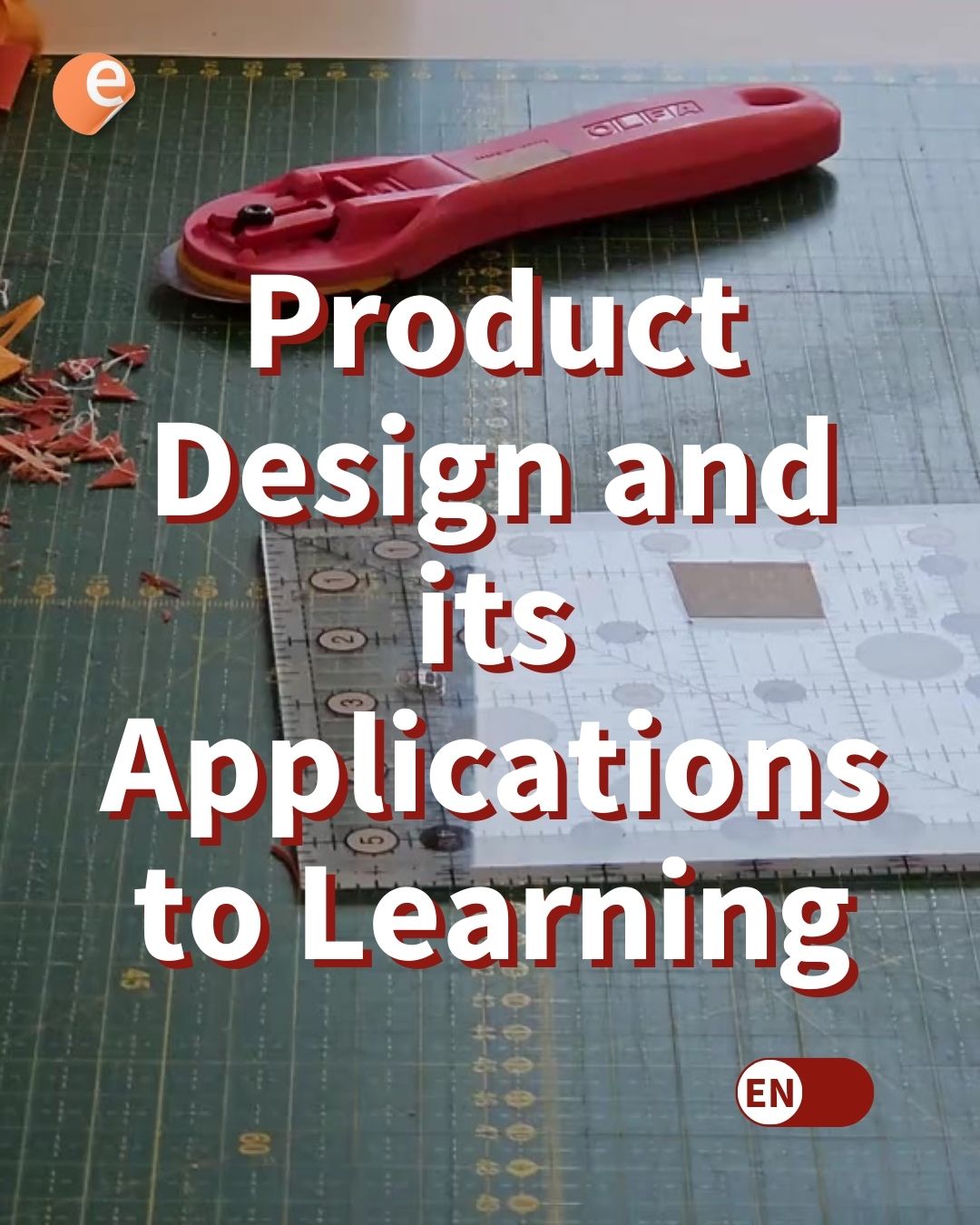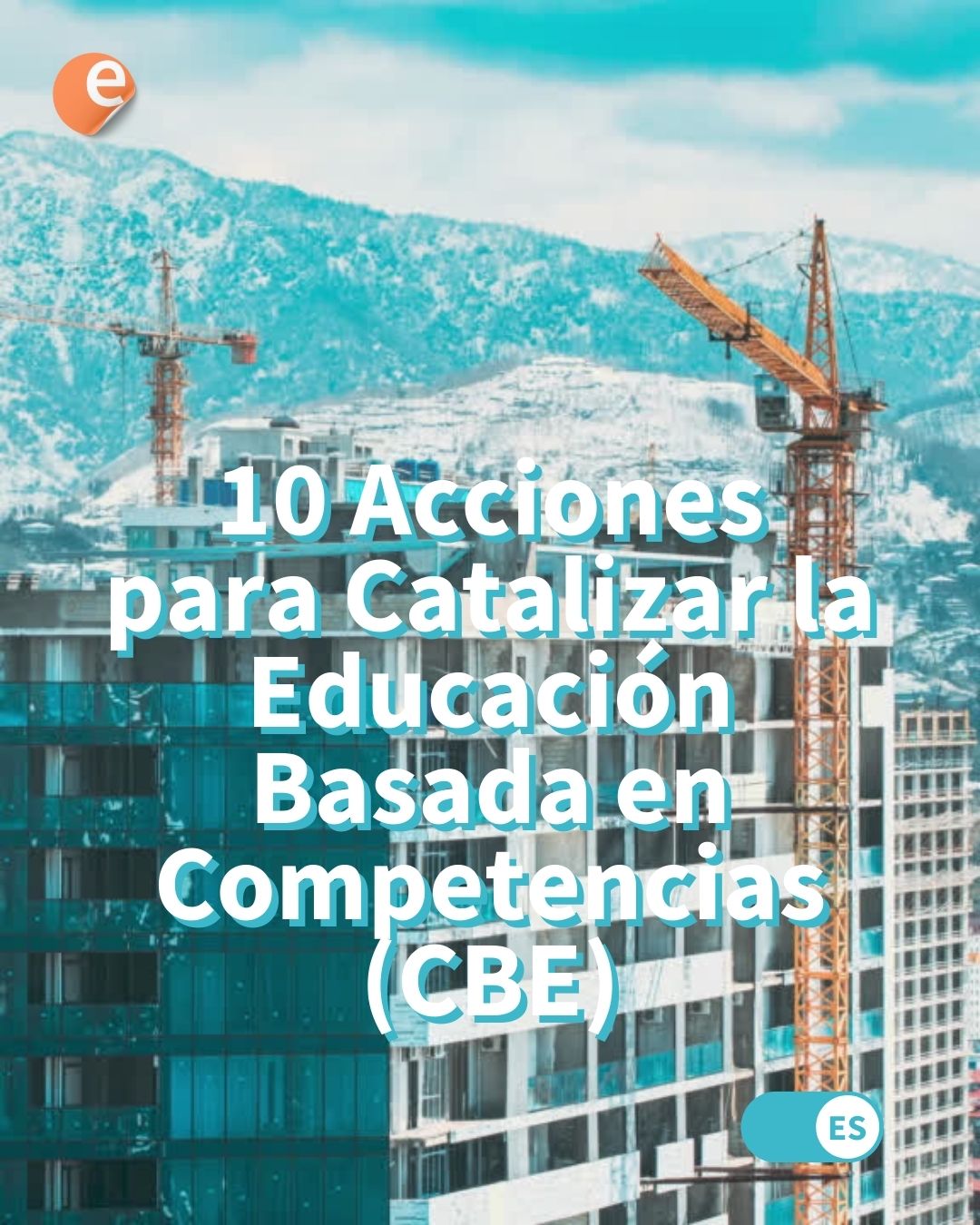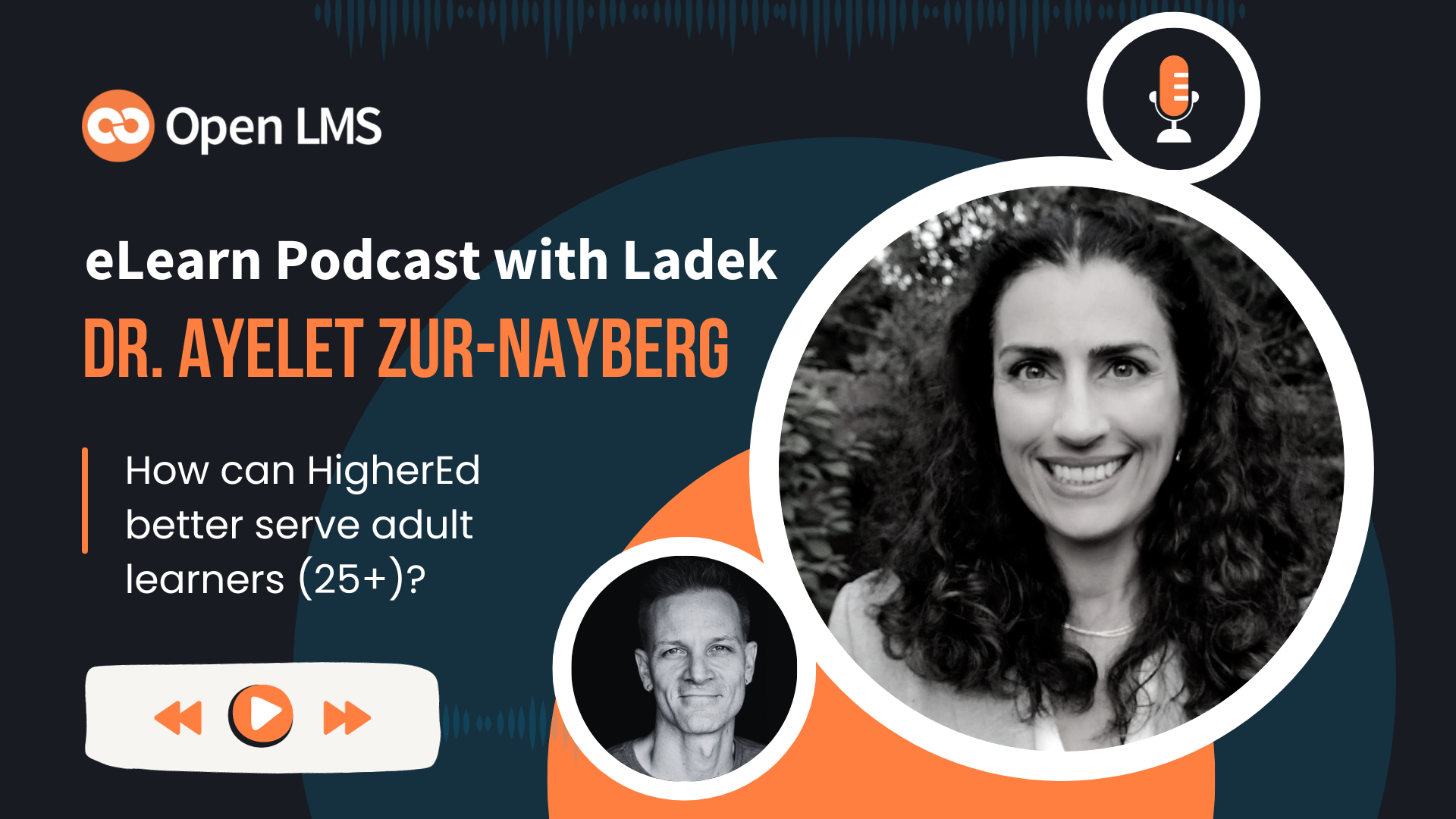In this article, we want to help you gain an understanding of your common tasks and activities and educators as “eLearning Processes” with the goal of improving your workflow, setting yourself up for success as a teacher or eLearning professional, and be able to use your baseline to kickstart educational innovation. Along the way, we hope you get an appreciation about ownership and the “Owner” role.
Introduction: Check on your processes
As educators, every day we perform activities that lead to a result. Preparing classes, choosing the material, planning student’s activities, writing and grading exams. A “Process” is simply a way to structure the steps, requirements and actions that offers consistency and guarantees the activity leads to the desired result every time. Without considering that our whole life is a process and every action we perform is part of a process.
As technologically enhanced educators and eLearning professionals, we can learn a few lessons from the software world. In this context, a process is a sequence of tasks. Their benefit is always human, as in a result that provides a valuable answer to the user, or in our case the learner. Teaching is planned by means of processes according to a base, which are often the study plans.
Getting into the weening world, we can identify what an eLearning consists of and how it is related to the processes. The combination of technological resources with human knowledge to achieve an objective, —that is, the reason for the project to exist— may involvedifferent processes and “sub-processes” that should balance effectiveness and clarity.
Processes in a project are usually grouped into phases, initiation, planning, execution, control and closure being the most common. Success at every level necessitates that someone is in charge, including themonitoring and review of the process development.
In education, we often talk about “Process Pedagogy,” a concept we can understand in two ways: How a chosen pedagogy or educational approach is active at each level, process and activity; as well as how the execution of a process within a team can benefit from a pedagogical practice.
You might also be interested in
Roles to succeed
In teaching and learning, plans can make a big difference. This applies for teams as well as individuals, be it ‘solopreneurs’\EdTechpreneurs, or a teacher who will be in charge of the same topics throughout their career. Of course, it’s often easier to move forward, or to reduce biases and tunnel vision, when working with someone’s help.
Try this exercise: Picture the school year or academic period from start to end. Write down what needs to happen where, who is in charge, and what that person needs to succeed. Consider things that may not go right, considering how early in the process they might happen, and how serious the impact on your teaching can be. Then again, think of the measures you would take to overcome these issues should they happen, who would be responsible and what resources they might need.
Now, let’s take a big leap and look into the roles we can find at large educational institutions. In some cases, scale allows for highly specialized roles within a company or even a project. In reality, these tasks are often split among a small team —or as pointed earlier, a one person army— but they help provide clarity about the relationship between processes and roles.
You may find that the following suggestions (they are not more than that) may be leaning too much into commercial and marketing areas. This is intentional, given our long-standing position about the pervasive education-marketing overlap we witness on a daily basis; and also considering the several types of roles that our audience performs.
Management roles
- Client Manager or Account Manager: The one who has direct contact with clients, the one who maintains a close relationship between the client and the company.
- Project Manager: The one who coordinates the work of the team to meet the project objectives.
- Unit Coordinator: Leads the collaboration between the team for the correct distribution of tasks.
- LMS Manager or LMS Admin: Person in charge of verifying if the course works correctly with the LMS tool.
Content writing roles
- Subject Matter Expert: Expert in the project, the person who can explain what the project consists of without misrepresenting the idea and make it clear to the clients.
- Instructional Design Writer: According to the knowledge in education, this person is in charge of converting the project into written text.
- Editor: The person in charge of making constant revisions to the instructional designer’s written content.
Design and development roles
- UX Designer: In charge of making the user experience within the digital part of the project enjoyable.
- Multimedia Developer: Person in charge of editing and creating multimedia content for the promotion of the project.
- Web Developer or Programmer: The person who translates the project into a web page and also gives functionality to the site.
Delivery roles
- Teacher, Professor, Instructor or Facilitator (includes TAs): In this role the teachers are the protagonists since they are the ones who guide, motivate and coordinate the project.
- Learner: An important role, after all the learner is the one who gives you feedback on the outcome of your project and whether it achieved its objective or not.
Stay in-the-know with these totally worth it conversations
An ‘Agile’ spin
The vast universe devoted to the endeavor of project and process management enjoys a wealth of approaches and methodologies. While this article aims to be agnostic in that regard, we wanted to highlight some of the more recent evolutions, which at the same time will familiarize you with the practice of contemporary IT development.
There is little doubt that the agile framework was a disruptive paradigm in the technology industry, which over time has seeped into several areas of the economy. It is not always the best approach, even in software development, but does come with a couple of interesting mindset shifts, including among them:
- It focuses on the end goal, and it strongly recommends that this goal adds “value” to the end user\learner
- It recognizes the importance of team management, both in terms of time and logistics, but also regarding motivation, team cohesion and culture
- It embraces data and analytics, enabling the possibility to provide real-time progress monitoring. (Provided proper tools are in use)
But perhaps the most interesting idea brought to the project management practice is the “Product Owner” role. We can easily boil down the product owner’s responsibilities into one: Information. They centralize all sources of information about a product, the processes required for its successful delivery, its market strategy and relationship with the end user. Most important is the fact that the product owner is not a product manager, and it is not supposed to be a management role. Coupled with some rules such as confidentiality, the product owner can ensure to get accurate information at different levels of the organizational hierarchy, and even play an arbitrator role if needed. For small teams or solo armies, it can be tricky to be both an owner and something else
Using processes to gain understanding
It is common to confuse a project with the document (charter, plan, SoT), but documenting and writing are essential components of process management. It is important to have a written or digital process that you can update regularly. Ideally before or after each activity, and including what was expected, and what is left to accomplish. A document can be a basic planning tool, with goals, actions, roles, timelines, deliverables, KPis. But it can also be a journal, a narrative device that promotes storytelling and helps with team and organizational learning. For reasons including impartiality and diverse perspectives, the product\process owner is the ideal role in charge of keeping the document up to date.
Thinking in processes of a project is to think in the standardization of activities and not only benefits the processes, but also benefits the final clients, end users and learners, since through this process the needs are satisfied in a practical and economic way. There can be advantages if you carry out a process, advantages such as:
- It helps increase team performance: A process helps you define a systematic view of all the activities and operations that take place within a project. It is very common that a project suffers a serious affection due to the lack of administrative and operational organization, harming the other teams involved. But by properly managing the order of processes and actions the work team can increase its productivity and thus distribute its knowledge and efforts in the right way.
- It reduces costs: Through the use of processes within a project it is possible that resources can be managed optimally for each work team and have control of project losses.
- Reduces execution times: With the use of a process and a properly raised strategy, work teams will be able to operate in an organized manner making use of resources without any interference in relation to meeting the deadlines established for the execution of each raised process.
- Optimization of all processes: Starting to create processes guarantees you the optimization of most or all processes. Since the template of a process can work as a basis for the other processes and adapt it according to the requirements of each process.
- Minimize errors: Through the creation of processes, increased staff productivity, better use of resources and reduced time errors in project operation are reduced.
- Increased project efficiency: According to the steps that a process has, from the beginning to the end as long as they are carried out correctly, there will be no interference, since by establishing a methodology in its development it is certain that the results will be effective.
- It increases the motivation of the collaborators: There is no better motivation for a work team than being able to achieve the objective metrics needed to carry out a project. With the use of processes, a good relationship and communication between work teams is created, which will result in the good use of each collaborator.
- It provides a sound baseline for innovation, experimentation, R&D. Think of your standard process as your control group. Any innovation you’d like to try out can share as many of the same assumptions, components and steps; so you can more clearly see any impact. And if your baseline process is well documented, you can always revert back to it.
Finally! Getting started with your eLearning Processes
You might have noticed the interchangeable (hopefully not too confusing) use of Project, Product and Process. As Evan Kimbrell puts it, ambiguity is near to its very essence. For now, suffice it to say that a project is a new or one-off set of activities that could eventually lead to a new product. And a product could be seen as the sum of its processes. They all share the attributes listed thus far: Value-based objective, actions, roles, resources, metrics and outcomes.
Now, it is time to seek excellence and greater opportunities for growth in your eLearning product! And for this, you can see some ideas on how to get started below:
- Project Plan: Establish what the project is looking for, the time frame in which the project will be developed, which group of people will benefit and which potential customers are interested in acquiring the service or product.
- Plan your team: Define and prepare the team that you want to accompany you during the development of the project. Review the project plan and its expected results, so you can find out what kind of team of people you need. Think about the skills that the potential team will have to carry out the process and how that team will be able to relate to the final client. It is advisable to do this assessment in the company of other project collaborators.
- Stakeholder Analysis: It is important to consider the stakeholders within the process, since they will also participate in the process. It is important to be clear about who works on the tasks, who approves the results and who gives feedback.
- Tools: Avoid using tools that are difficult to use, find one that suits the needs or requirements of the project and that can be managed by anyone. After the project is advanced the tools may change according to the results.
- Risks Management: Anticipating hazards in the initial phase of a project is the best thing you can do. Establish risks that may impede the execution of the project. Again, it is important that you do this in the company of the collaborators to have a bigger perspective on the possible risks.
- Scope and Results: According to the previous step you can also get an idea of what could be the scope of the project and what are the desired results after its execution.
- Budgets and delivery times: From the scope and deliverables, you start to get an idea of the costs and time it will take to complete the project. Don’t force a process on the project, make the process fit the project.
- Measuring Success: Every project needs some kind of measurement according to its success or failure so you can understand what worked and what didn’t.
Visualizing your processes: Examples & Productivity Tips
As we have been talking about throughout the article, process mapping brings advantages for the project, for that reason, we have created a list of 5 process mapping tools that exist. To find out which tool is right for your project, read on!
Brainstorming and MindMapping with GitMind
This is a tool for making diagrams and mind maps. You can use it for free on your computer or mobile device for up to 10 maps. If you need to make more, you can pay for a version with more maps. You can share your work easily and there is a library of templates to help you.
Process sketching and wireframing with Lucidchart
This is a tool for making diagrams with a team in real time, with tons of process for templates, UML shapes and impressive export\import capabilities. You can use it for free for up to 60 shapes per document. If you use an email from your school, you can get a special educational account with even more shapes and templates.
Get down to business with the Google Workspace apps
Docs, Sheets, Slides and Drawings probably don’t need an introduction. Get them for free with your Google or Gmail account. Real-time saving and collaboration, a never-ending list of new features and reliable ease of use have made them a staple of the modern digital workplace.
Jazz it up and make it your own with Canva
Make all kinds of designs, including mind maps and diagrams. Import virtually any kind of file into a presentation or document, and take advantage of the recently added buil-in features. It has templates and graphics to help you make your projects as the icing on the cake. You can use it for free or pay for a Pro version with more features (which you can get for free with an .edu email account.)
Make it compliant with Cacoo
This is a tool for making diagrams in a business environment. You can work with a team and see changes in real time. The tool also sends notifications so everyone stays informed about the work being done. The interface is a little more serious than the other tools.
You can make good use of these tools by taking into account the previous guide on how to get started, this will help you define your project and stipulate the results you want to have. You can also thoroughly review each function that the tool has so that you understand how it works and what use you can make of it with your projects. Explore each icon and element within the tool so that when it comes to directing the process or working with your team there is someone with prior knowledge of the tool and the work is easy for everyone.
Circling back to ownership
Previously we gave you an overview of one of the possibly most important roles in the modern project management landscape: the product owner. But to understand the term more clearly we are going to describe what their role is and how important it is. A product owner is responsible for increasing the value of the products created by a team, just not by force or commands, but by achieving consensus. And for this the product owner is involved in different tasks. They take the initiative in areas of development and establishes strategies to present to stakeholders. In short, the role of the product owner responds to the highest communicational needs. They must be versatile and adaptable to the conditions of the project development.
So, what are the responsibilities of a product owner?
Defining the vision (as in making teams accountable for it)
Based on their knowledge and experience, this role helps define the objectives and vision of the development project and keep the information flow healthy. The product owner is in charge of communicating with stakeholders, educating them if you will, on the team’s vision in a clear way. Also by means of a roadmap the product owner can keep the stakeholders informed.
Managing the product backlog (someone else’s duties)
This refers to the development team’s project task list. The product owner is responsible for creating the list and prioritizing them according to the overall strategy and objectives. They must also be aware of updates to the product backlog according to the needs presented throughout the project. The burndown chart is their most dependable weapon.
Prioritizing needs
For this reason the product owner must be involved in different roles. As the project evolves, they will accrue a unique vantage point to support decisions such as pivoting and reinvestment.
Monitoring product progress
They are responsible for identifying each stage of the development process and the final product. They take a major role in inspecting and evaluating the progress of the product. They report to stakeholders on performance, and provides the information upon which critical decisions are made, whether the team needs to continue at one step of the process, or move on to the next.
To sum up
The process owner has assigned himself the overall responsibility for integrated business process management and is responsible for ensuring that the process meets the established objectives related to overall process effectiveness and efficiency from start to finish. Although the owner has been assigned the responsibility of leader and supervisor, it is not necessary for this role to have all the competences required for the implementation of the process. These can be supplemented by additional collaborators.
In a process driven company, employees have responsibility for every step of the process. So process ownership is not a job title but a role to be played to fulfill the process.
After following this article, it is now your turn. Apply what you read here and get ready to succeed in your business idea or organization through a process (and a process owner) based approach. Get started with one of the tools suggested above, and start putting your ducks in a row. Carrying out this process management will give you a clear view of what is going on around and within your eLearning product or project, and will make it easier for you to figure out ways to optimize your resources and make amazing things possible.









